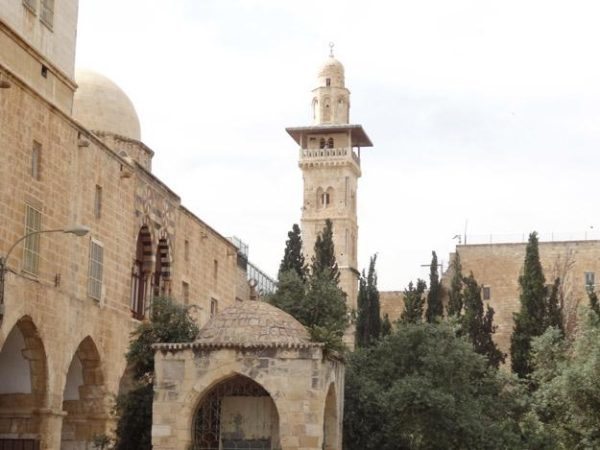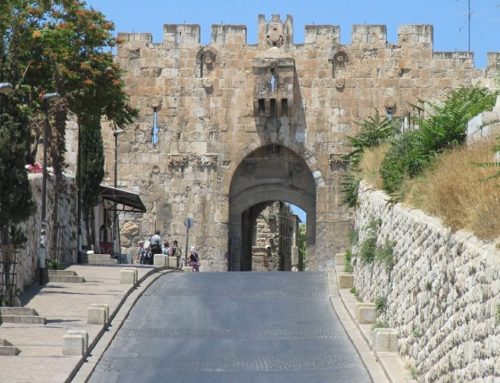

Construction
A minaret is composed of three sections: the base, which is either square, cylindered or conical, the body of the minaret, and the balcony from where the adhan is called. The top also consists of the neck, the dome, the pippins, and the crescent. The balcony can be reached through a flight of stairs that at the base of the minaret. [2]
Minarets of Al-Aqsa
Al-Aqsa has four minarets, none of which are attached to the actual mosques, but distributed in the western and northern sides of the courtyard, where most people are concentrated. The minarets that were built during the Mamluk period were actually built on top of originals believed to be built in the time of Abd Al-Malik, the Umayyad Caliph, when minarets were popular. .[3]
Below are a list of the Al-Aqsa Minarets:[4]
The Moroccan Gate Minaret known Al-Fakharya
The Chain Gate Minaret
Al-Ghawanimah Gate Minaret
The Lions’ Gate Minaret
[1] Hassan Mustafa Khater, Al-Quds: the Educational Pictorial Atlas (Jordan: International Jerusalem Center for Media, International Studies and Documentation, 2013), 282
[2] Khater, Al-Quds, 282
[3] khater, Al-Quds, 283 and “Minarets of Al-Aqsa,” last modified July 2, 2017, http://www.aljazeera.net/encyclopedia/citiesandregions/2016/2/6/مآذن-الأقصى
[4] “Minarets of Al-Aqsa,” last modified July 2, 2017, http://www.aljazeera.net/encyclopedia/citiesandregions/2016/2/6/مآذن-الأقصى






